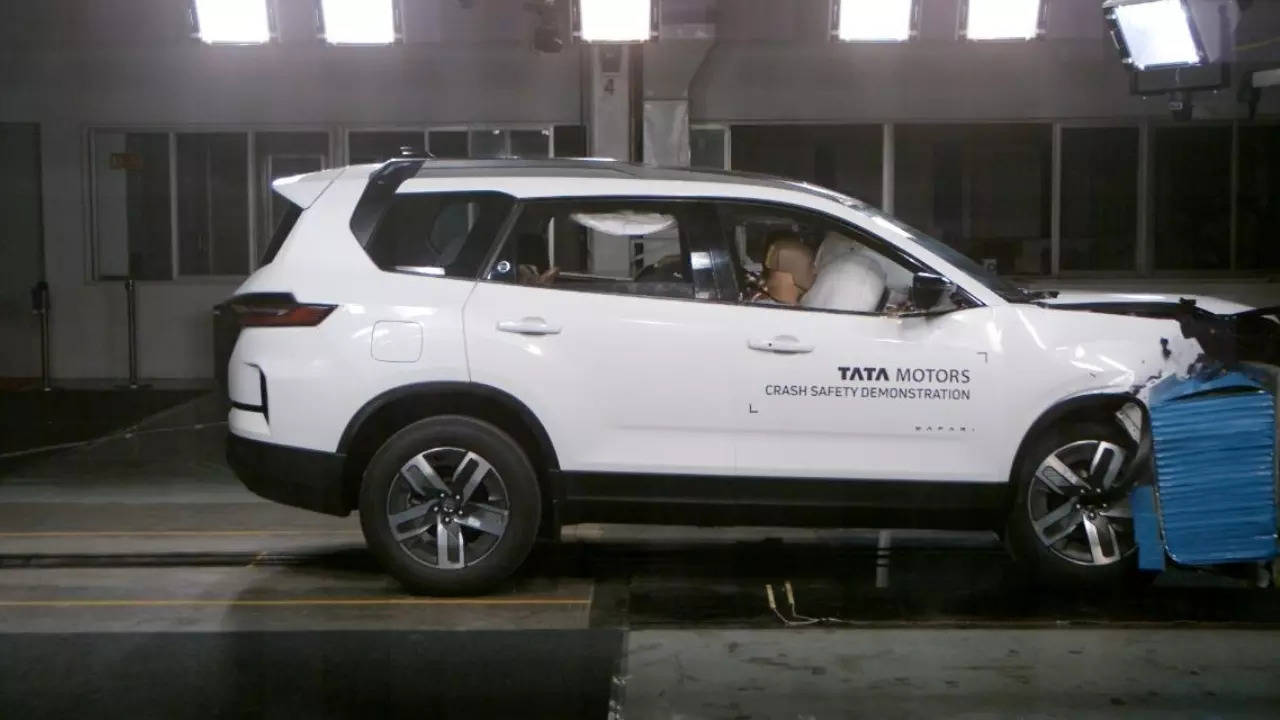During our visit to the manufacturer’s facility in Pune, we had the opportunity to observe firsthand the rigorous safety testing process, including a frontal impact test conducted on the new Safari SUV.For those unfamiliar, this vehicle has already achieved impressive 5-star ratings in both the Global NCAP (GNCAP) and India’s Bharat NCAP safety assessments.
What is a frontal impact test?
A frontal impact crash test is specifically designed to replicate a head-on collision scenario between two vehicles. For instance, in the Global NCAP test, the car being evaluated is propelled at a speed of 64 kmph and crashes into a deformable barrier with a 40 percent overlap.
Tata Safari frontal impact test: How it is done
The test demonstrated a frontal collision at a speed of 64 kmph, replicating a real-world scenario. The force of the impact was felt (and of course, heard aloud), even from a distance where the car crashed into the barrier. To put it into perspective, the sound was almost like a loud explosion.
The company says that these collisions provide valuable insights into the vehicle’s structural integrity and occupant protection capabilities. As for the process, it involves a procedure of data collection and analysis that begins immediately after the test.
Wondering where this data comes from? Inside the vehicle during the test were two adult dummies in the front seats and two child dummies in the rear. These dummies are equipped with over 42 sensors each, recording crucial data throughout the collision. What’s truly remarkable is that each of these dummies can cost up to Rs 3 crore. However, they are reusable and only need minor repairs for wear and tear over time.
Tata Safari crash test: What happens to the structure and cabin
Upon closer inspection following the crash, the front crumple zones did their job quite well, absorbing the impact and preventing intrusion into the cabin. The A-pillars remained undamaged, ensuring the survival space for occupants. What’s even more impressive was the fact that the windshield did not shatter and the hood remained largely intact.
The undamaged windshield could be due to the SUV’s tall stance, with the barrier only reaching up to the fender height. However, n a real-world scenario where the vehicle collides with a larger vehicle, the chances of the windshield cracking are higher due to the increased impact force.
Moving inside, the 7 airbags deployed immediately, cushioning the dummies positioned as the driver and passengers. Beyond the damage to the front fascia of the SUV, the remainder of the car’s structure was remarkably stable. Even the front doors largely remained unaffected, which means that the driver and the passengers can easily exit the vehicle without any hindrance in a similar real-world situation.
When it comes to the damage, the driver’s side of the SUV, which absorbed the forces of the impact from the barrier, showed considerable damage. The good thing is that the crumple zones in the front effectively absorbed the impact, while the cabin, thanks to its robust construction and safety features, appeared to offer sufficient protection to the occupants in high-impact crashes like the one simulated.
